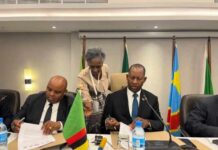The Zambezi River Authority (ZRA) has increased water allocations for electricity generation at Kariba Dam, leading to a significant reduction in load shedding across Zimbabwe. The enhanced water release now permits both Zimbabwe and Zambia to generate 485 megawatts (MW) each daily, a substantial rise from the previous 185 MW. Africa Press Arabic
This development follows improved water levels in the dam, attributed to normal to above-normal rainfall during the 2024/25 rainy season. As of yesterday, Zimbabwe’s total power generation reached 1,622 MW, with contributions of 1,066 MW from Hwange, 485 MW from Kariba, and 71 MW from Independent Power Producers (IPPs). The nation’s peak energy demand stands at approximately 2,000 MW. Herald+2thezimbabwean.co+2Africa Press Arabic+2
Energy and Power Development Minister July Moyo expressed optimism about the country’s power situation, citing ongoing government initiatives aimed at further enhancing electricity generation. He noted that Unit 7 at Hwange, which was undergoing routine maintenance, is expected to return to service shortly, further boosting power output. Additionally, from April onwards, certain IPPs, such as Chiredzi Green Fuel, are anticipated to begin supplying electricity to the national grid.
Zimbabwe has been grappling with persistent power shortages in recent years, exacerbated by drought conditions linked to El Niño and the refurbishment of older units at Hwange. Despite reduced generation at Kariba Hydropower Station, national power production has averaged between 800 and 1,000 MW daily, thanks to measures such as the expansion of Hwange Units 7 and 8 in 2023.
The synchronization of these units led to a notable improvement in power generation capacity. The Zimbabwe Power Company (ZPC) is also refurbishing six power generation units at Hwange, funded by a loan from the Export-Import Bank of India. Enhanced local power generation is expected to reduce the country’s reliance on electricity imports, alleviate power cuts, and stimulate industrial production, ultimately saving Zimbabwe millions of US dollars spent on monthly electricity imports.
This article is based on information from The Chronicle.

 JOIN DRIVERN TAXI AS PARTNER DRIVER TODAY!
JOIN DRIVERN TAXI AS PARTNER DRIVER TODAY!











